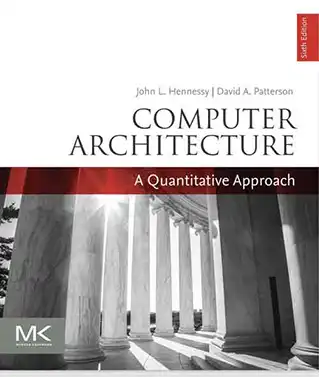
- خانه
- رشته کامپیوتر
- معرفی رشته مهندسی کامپیوتر
- معرفی رشته علوم کامپیوتر
- معرفی رشته فناوری اطلاعات
- نظر دانشجویان رشته مهندسی کامپیوتر
- درامد رشته کامپیوتر
- مهاجرت رشته کامپیوتر
- شغل های رشته کامپیوتر
- آیا رشته کامپیوتر سخت است؟
- شرایط ورود به رشته کامپیوتر
- رشته کامپیوتر برای دختر
- برای رشته کامپیوتر چه درس هایی باید قوی باشند؟
- زیر شاخه های رشته کامپیوتر (فنی حرفهای و کاردانش)
- معرفی رشته کامپیوتر فنی حرفه ای
- دروس رشته کامپیوتر
- بازار کار رشته کامپیوتر
- آینده رشته کامپیوتر
- بیکاری در رشته مهندسی کامپیوتر
- مزایا و معایب رشته مهندسی کامپیوتر
- رتبه بندی دانشگاه های ایران
- اصطلاحات رشته کامپیوتر به انگلیسی
- آی تی و هر آنچه در مورد آن باید بدانید
- هوش مصنوعی و هر آنچه در مورد آن باید بدانید
- دانلود کتاب های رشته کامپیوتر
- چارت درسی مهندسی کامپیوتر
- ارشد
- کنکور ارشد کامپیوتر
- منابع کنکور ارشد کامپیوتر
- مصاحبه با رتبه های برتر کنکور ارشد کامپیوتر
- فیلم های رایگان کنکور ارشد کامپیوتر
- گرایش های ارشد مهندسی کامپیوتر
- کارنامه های کنکور ارشد کامپیوتر
- دفترچه سوالات کنکور ارشد کامپیوتر
- دروس کنکور ارشد کامپیوتر و ضرایب آن
- تعداد سوالات کنکور ارشد کامپیوتر
- بودجه بندی کنکور ارشد کامپیوتر
- ظرفیت پذیرش کارشناسی ارشد کامپیوتر
- سرفصل دروس کنکور ارشد کامپیوتر
- بهترین دانشگاه های رشته مهندسی کامپیوتر
- معرفی ارشد کامپیوتر
- آزمون آزمایشی کنکور ارشد کامپیوتر
- گرایش های مهندسی کامپیوتر
- کنکور ارشد فناوری اطلاعات
- منابع کنکور ارشد فناوری اطلاعات
- مصاحبه با رتبه های برتر کنکور ارشد فناوری اطلاعات
- فیلم های رایگان کنکور ارشد فناوری اطلاعات
- گرایشهای ارشد فناوری اطلاعات
- کارنامه های کنکور ارشد فناوری اطلاعات
- دفترچه سوالات کنکور ارشد فناوری اطلاعات
- دروس کنکور ارشد فناوری اطلاعات و ضرایب آن
- تعداد سوالات کنکور ارشد فناوری اطلاعات
- بودجه بندی کنکور ارشد فناوری اطلاعات
- ظرفیت پذیرش کارشناسی ارشد فناوری اطلاعات
- معرفی رشته آی تی یا فناوری اطلاعات
- شغل های رشته آی تی
- کنکور ارشد علوم کامپیوتر
- منابع کنکور ارشد علوم کامپیوتر
- مصاحبه با رتبه های برتر کنکور ارشد علوم کامپیوتر
- فیلم های رایگان کنکور ارشد علوم کامپیوتر
- گرایشهای ارشد علوم کامپیوتر
- کارنامه های کنکور ارشد علوم کامپیوتر
- دفترچه سوالات کنکور ارشد علوم کامپیوتر
- دروس کنکور ارشد علوم کامپیوتر و ضرایب آن
- تعداد سوالات کنکور ارشد علوم کامپیوتر
- سرفصل دورس کنکور ارشد علوم کامپیوتر
- بهترین دانشگاه های ایران در رشته علوم کامپیوتر
- علوم کامپیوتر یا مهندسی کامپیوتر
- چارت درسی رشته علوم کامپیوتر
- معرفی رشته علوم کامپیوتر
- مشکلات رشته علوم کامپیوتر
- موارد مشترک کنکور ارشد کامپیوتر، IT و علوم
- مصاحبه با رتبه های برتر کنکور ارشد کامپیوتر، آی تی و علوم کامپیوتر
- معرفی کامل دروس کنکور ارشد کامپیوتر، آی تی و علوم کامپیوتر
- مشاوره از نگاه رتبه های برتر کنکور ارشد کامپیوتر
- دفترچه سوالات کنکور ارشد کامپیوتر، آی تی و علوم کامپیوتر
- تاثیر معدل در کنکور ارشد کامپیوتر، آی تی و علوم کامپیوتر
- ظرفیت پذیرش کارشناسی ارشد کامپیوتر و آی تی
- انتخاب رشته کنکور ارشد کامپیوتر، آی تی و علوم کامپیوتر
- بهترین دانشگاه های ایران
- پلتفرم آزمون و بانک تست کنکور ارشد کامپیوتر، آی تی و علوم کامپیوتر
- پلتفرم برنامهریزی کنکور ارشد کامپیوتر و آی تی
- سامانه تخمین رتبه کنکور ارشد کامپیوترو آی تی
- فیلم آموزشی دروس کنکور کنکور ارشد کامپیوتر، آی تی و علوم کامپیوتر
- کارنامههای کنکور ارشد کامپیوتر و IT
- بودجه بندی سوالات کنکور کنکور ارشد کامپیوتر و آی تی
- کنکور ارشد کامپیوتر
- دکتری
- دروس مهم رشته کامپیوتر
- برنامهریزی کنکور کامپیوتر
- همایشها
- خرید فیلمها
- دورههای مهارتی
- بلاگ
- دیگر خدمات
- پلتفرم آزمون و بانک تست
- پلتفرم برنامهریزی
محبوبترینها : برنامه نویسی علم داده رشته کامپیوتر کنکور شبکه و امنیت هوش مصنوعی ساختمان داده منطقی
0
ورود | ثبت نام 








